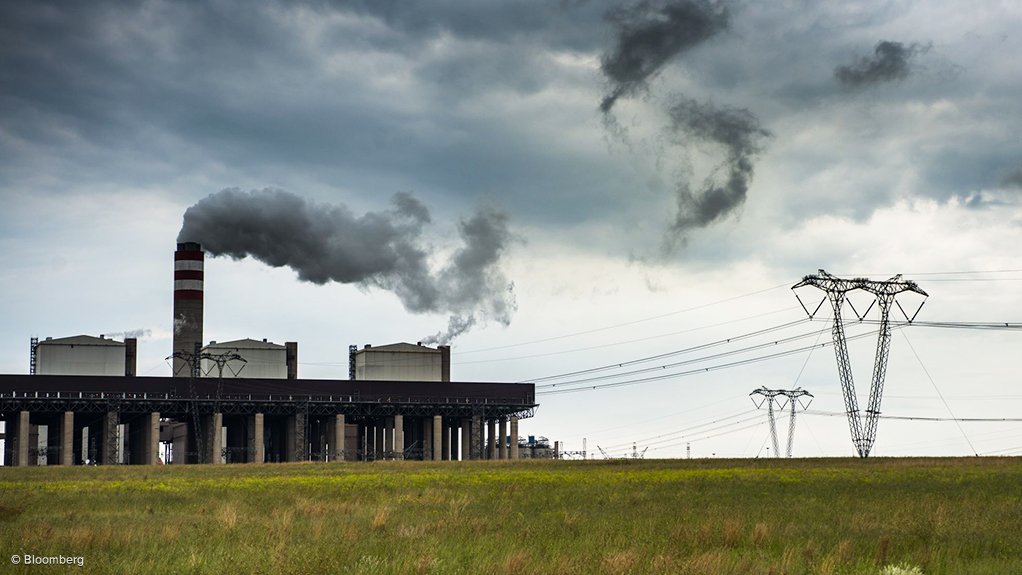Eskom is now world’s biggest sulphur dioxide emitter, CREA says
Eskom Holdings, South Africa’s coal-reliant power utility, has become the world’s biggest emitter of sulphur dioxide, a pollutant linked to ailments ranging from asthma to heart attacks, the Centre for Research on Energy and Clean Air (CREA) said.
Eskom produced 1 600 kilotons of the pollutant in 2019, the latest year for which comparable data is available, according to the report released on Tuesday by CREA, an air-pollution research organization. That was more than any company, and the total emission of the power sector of any country with the exception of India.
While China, the U.S. and the European Union have slashed sulphur dioxide emissions in recent years by fitting pollution abatement equipment to power plants, Eskom has only done so at one of its 15 coal-fired facilities. Eskom has disputed a 2019 study that ties its emissions to more than 2,000 deaths a year, though it said its pollution killed 320 people annually.
“They need to comply with minimum emission standards to reduce the burden they place on public health,” said Lauri Myllyvirta, lead analyst at CREA, in an interview. “The only viable way to do that is to phase out some of the plants that are in the worse condition in terms of reliability and upgrade the rest.”
Eskom and South Africa’s environment department didn’t respond to a request for comment.
China has slashed its annual emissions to 780 kilotons from 13 000 kilotons in 2006, CREA said. The nation’s biggest coal-fired power plant operator, Huaneng Power, emitted 26 kilotons of sulphur dioxide last year from a fleet of power stations with almost twice Eskom’s installed capacity of about 44 000 MW, it said.
Eskom’s pollution is also high because of the high sulphur content of the coal it burns, Myllyvirta said.
Myllyvirta put the cost of fitting Eskom’s plants with the equipment, known as flue-gas desulphurization units, at between R100-billion and R200-billion. Eskom has previously said it would need to spend R300-billion to comply with South Africa’s emission standards.
The state-owned power utility is more than R400-billion in debt.
Article Enquiry
Email Article
Save Article
Feedback
To advertise email advertising@creamermedia.co.za or click here
Comments
Announcements
What's On
Subscribe to improve your user experience...
Option 1 (equivalent of R125 a month):
Receive a weekly copy of Creamer Media's Engineering News & Mining Weekly magazine
(print copy for those in South Africa and e-magazine for those outside of South Africa)
Receive daily email newsletters
Access to full search results
Access archive of magazine back copies
Access to Projects in Progress
Access to ONE Research Report of your choice in PDF format
Option 2 (equivalent of R375 a month):
All benefits from Option 1
PLUS
Access to Creamer Media's Research Channel Africa for ALL Research Reports, in PDF format, on various industrial and mining sectors
including Electricity; Water; Energy Transition; Hydrogen; Roads, Rail and Ports; Coal; Gold; Platinum; Battery Metals; etc.
Already a subscriber?
Forgotten your password?
Receive weekly copy of Creamer Media's Engineering News & Mining Weekly magazine (print copy for those in South Africa and e-magazine for those outside of South Africa)
➕
Recieve daily email newsletters
➕
Access to full search results
➕
Access archive of magazine back copies
➕
Access to Projects in Progress
➕
Access to ONE Research Report of your choice in PDF format
RESEARCH CHANNEL AFRICA
R4500 (equivalent of R375 a month)
SUBSCRIBEAll benefits from Option 1
➕
Access to Creamer Media's Research Channel Africa for ALL Research Reports on various industrial and mining sectors, in PDF format, including on:
Electricity
➕
Water
➕
Energy Transition
➕
Hydrogen
➕
Roads, Rail and Ports
➕
Coal
➕
Gold
➕
Platinum
➕
Battery Metals
➕
etc.
Receive all benefits from Option 1 or Option 2 delivered to numerous people at your company
➕
Multiple User names and Passwords for simultaneous log-ins
➕
Intranet integration access to all in your organisation

















